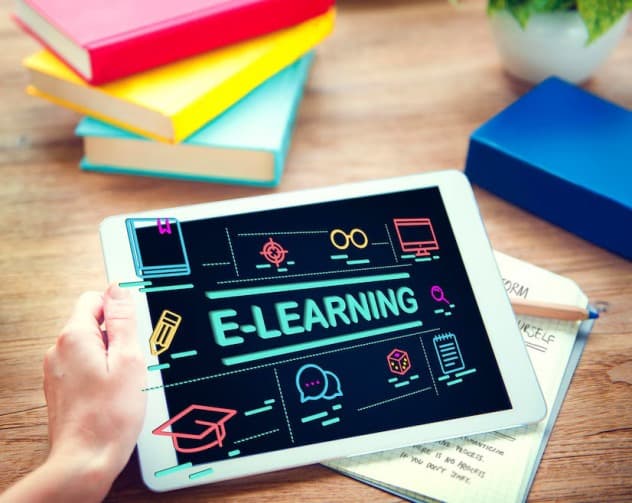Classroom interactions are essential in every academic setting. Instructors need to find ways to ensure students assimilate what they are teaching, and students must be able to express their understanding clearly.
This is particularly crucial in tech-related online master’s programs, where there are several technicalities to learn. There are several interactive formats used in online master’s classes that are important in tech-related degrees.
Interactive formats in online master’s programs and their use in tech-related fields
Digital education is normalized now, and there are several technological innovations designed to simplify the process of online learning. There are various interactive formats used in tech-related online master’s programs that help students obtain their degrees.
Video Conferencing
Video conferencing is the most common and effective interaction between instructors and students. During these conferences, such as virtual classrooms, students can ask questions and get clarification immediately.
It eliminates the prolonged period of having to email questions to the instructor. Studying for a software engineering degree is a prime example of video conferencing in live coding sessions. If someone would like to enroll in a software engineering course, Baylor University offers an in-depth online Master’s Program in Computer Science Software Engineering which provides detailed coding classes and individual support from dedicated student success coaches, as well as professors.
Live coding lets instructors demonstrate coding techniques in real-time. Students can simultaneously watch a YouTube demonstration on de-bugging codes while their instructor performs the task. Students can ask questions on topics that need to be clarified, and they are more likely to remember this interaction when they are practicing at home.
Video conferencing also makes it easier for students to interact among themselves. They can work together on projects and assignments, share their screen to show how they solved an equation, and even troubleshoot problems as a team. It gives the quality of a traditional academic setting, with all the advantages of digital learning.
Online Discussions
Online discussions comprise forums, group chats, and communities created solely for academic purposes. These forums allow students to engage in asynchronous debates. They can share their ideas, discuss an unclear topic in class, or even get feedback from their colleagues on a project they did.
These platforms help students develop critical thinking and impressive communication skills. If students regularly discuss topics with fellow peers in a group, over time, they will build friendships and improve their communication skills.
Students will also find that they can articulate their thoughts better, and get a chance to learn from different perspectives; online discussions enrich their educational experience.
Collaborative Projects
Collaborative projects are similar to the trending remote job culture. Instructors assign projects to a group of students to work on, and these projects encourage students to work with other people across different time zones and use collaborative tools and platforms like Trello and Slack. Besides sharpening their technical skills, these projects help students develop soft skills, like teamwork and leadership, that will be useful in their job roles in the tech industry.
Leadership is especially important because students with tech-related degrees may need to lead a team in their workspace. During these projects, students often rotate leadership, with one person in charge during a process and another in charge during a different procedure; they may even step into these positions as projects progress. This experience teaches students how to lead a team towards a common goal.
Virtual Reality Simulations
Virtual reality (VR) simulations make online education more engaging, especially for students studying advanced tech subjects. VR creates an interactive world where students can practice everything they have learned without facing any risk. They put on a headset and can enter a computer lab that doesn’t physically exist but has been simulated to show everything students need to learn.
In that lab, students get to try new tech inventions or solve a project. Students can apply all the theories they have learned in real-life situations that aren’t real.
VR offers a practical approach to teaching, which significantly increases how well students can understand difficult concepts by practicing them.
Interactive Coding Platforms
Interactive coding platforms are virtual playgrounds for learning how to program. They are platforms where students can run trial and error on everything coding.
When learning to code, understanding the theory is one thing, but writing code, seeing what it does, and fixing it when it doesn’t work is where the real learning happens. These platforms let students code, run it to see if it works, and get immediate feedback.
For example, if students are trying to learn how to make a website, they could write the code for the website layout, press a button, and see how that layout looks right away. If something is off, the platform will highlight their errors or suggest improvements.
Some of the platforms that students can practice with are Codeacademy which lets students write code directly in their browser and gives immediate results; LeetCode which lets students practice coding challenges and prepare for technical interviews; and the beginner-friendly Khan Academy.
Gamification
Gamification is when instructors add game fun to the curriculum. In coding, instructors may sprinkle game elements, like points, levels, and badges, into the educational process. The goal of gamification is to help students enjoy and interact more with the material.
Coding challenges are perfect examples of gamification in the tech field. Students try to solve tasks or problems through coding. They are usually competing against each other, with a reward awaiting the winner. It motivates the students, encourages them to be creative with their problem-solving skills, and engages them to be active in their studies.
The use of interactive formats in digital classrooms
Integrating these interactive formats into an online master’s program, especially in tech-related fields, prepares students for the realities of the tech industry. It also encourages them to participate in their learning process. More importantly, it boosts interaction in digital classrooms, which can help students in many ways.



